Kitchen lighting over the table is one of the most crucial elements when designing or remodeling a kitchen. Not only does it serve a functional purpose by illuminating the space, but it also contributes significantly to the ambiance and style of the room. The right lighting can create a warm, inviting atmosphere while ensuring that tasks like dining, reading, and other activities around the table are well-lit. The wrong lighting, however, can result in a space that feels too bright, too dim, or simply off-balance in terms of design. When considering lighting options for the kitchen table, it’s important to think about the style of lighting, the type of fixtures, the placement, and the intensity of the light.
There are various lighting styles to choose from when selecting fixtures for the kitchen table. Pendant lights, chandeliers, and linear suspensions are some of the most popular choices. Pendant lights are versatile, available in numerous designs, and can be used alone or in multiples for a modern look. Chandeliers add a more dramatic, decorative element and are ideal for larger spaces with higher ceilings. A linear suspension can offer a sleek, minimalistic aesthetic, often best suited for longer tables or more contemporary kitchens. The design of the lighting fixture should complement the rest of the kitchen’s décor to maintain a cohesive look.
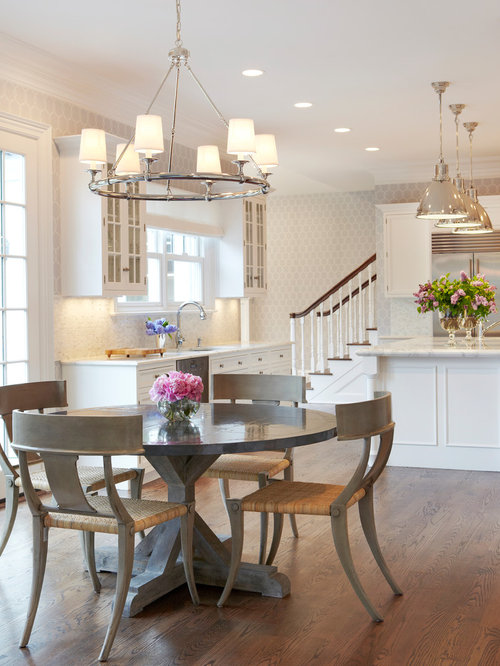
The type of light bulb you choose is another crucial factor. LED bulbs are highly recommended for kitchen table lighting due to their energy efficiency, longevity, and customizable light temperatures. Warm white LEDs can create a cozy, intimate setting, perfect for dining, while cool white LEDs provide a bright, clear light that is ideal for task-oriented activities. Additionally, dimmable lights allow for greater flexibility, giving you control over the ambiance depending on the time of day or the nature of the activity at the table.
Placement of lighting over the table is another critical aspect to consider. The fixture should be centered over the table, creating symmetry and balance in the room. Ideally, the bottom of the lighting fixture should hang 30 to 36 inches above the tabletop, depending on the ceiling height. For tables that are particularly long or wide, multiple pendant lights may be used to distribute light evenly across the surface. If the light is placed too high, it may not provide sufficient illumination, and if placed too low, it can obstruct the view or make the space feel cramped.

When considering the size of the lighting fixture, it’s important to scale the light to the size of the table. A light fixture that is too large may overwhelm the space, while one that is too small may not provide adequate illumination. A good rule of thumb is to choose a fixture that is about one-third the width of the table. For example, if your table is 6 feet long, the fixture should be around 2 feet in width. The length of the fixture should also be proportionate to the table to ensure it covers the surface area without looking out of place.
Lighting temperature and brightness are equally important. For general lighting over the kitchen table, a bulb with a color temperature between 2700K and 3000K is usually ideal, as it provides a warm, inviting glow that mimics natural light. For tasks requiring more focused illumination, such as reading or working on projects, a higher color temperature of around 4000K may be more appropriate. In terms of brightness, aim for a total of 200 to 400 lumens per square meter of table space, depending on the activities performed around the table.

Another important consideration is how the lighting fixture will interact with other lighting in the room. Layered lighting is key to creating a well-lit kitchen. In addition to the fixture over the table, consider incorporating ambient lighting, such as recessed ceiling lights, under-cabinet lighting, or wall sconces. These lights can help fill in any shadows or dark spots, ensuring the entire room is evenly illuminated. Task lighting, such as over a kitchen island or stove, is also important for completing specific tasks in the kitchen.
If your kitchen table serves multiple purposes, such as a dining area, homework station, or workspace, versatility in lighting is important. As previously mentioned, dimmable lights are an excellent option, as they allow you to adjust the brightness to suit the activity. You may also want to consider a lighting fixture with adjustable arms or shades that can be directed toward specific areas when needed. This can help create a more functional and adaptable space.
It’s also worth considering the materials and finishes of the lighting fixture. Metal, glass, wood, and fabric are all common materials used in kitchen lighting fixtures. Metal fixtures, such as those made of brass, copper, or stainless steel, offer a modern, sleek look, while wooden fixtures can add warmth and a rustic feel. Glass fixtures, particularly those with clear or frosted shades, are ideal for maximizing light output and creating a bright, open feel in the room. The material should not only match the aesthetic of your kitchen but also be practical in terms of cleaning and maintenance.
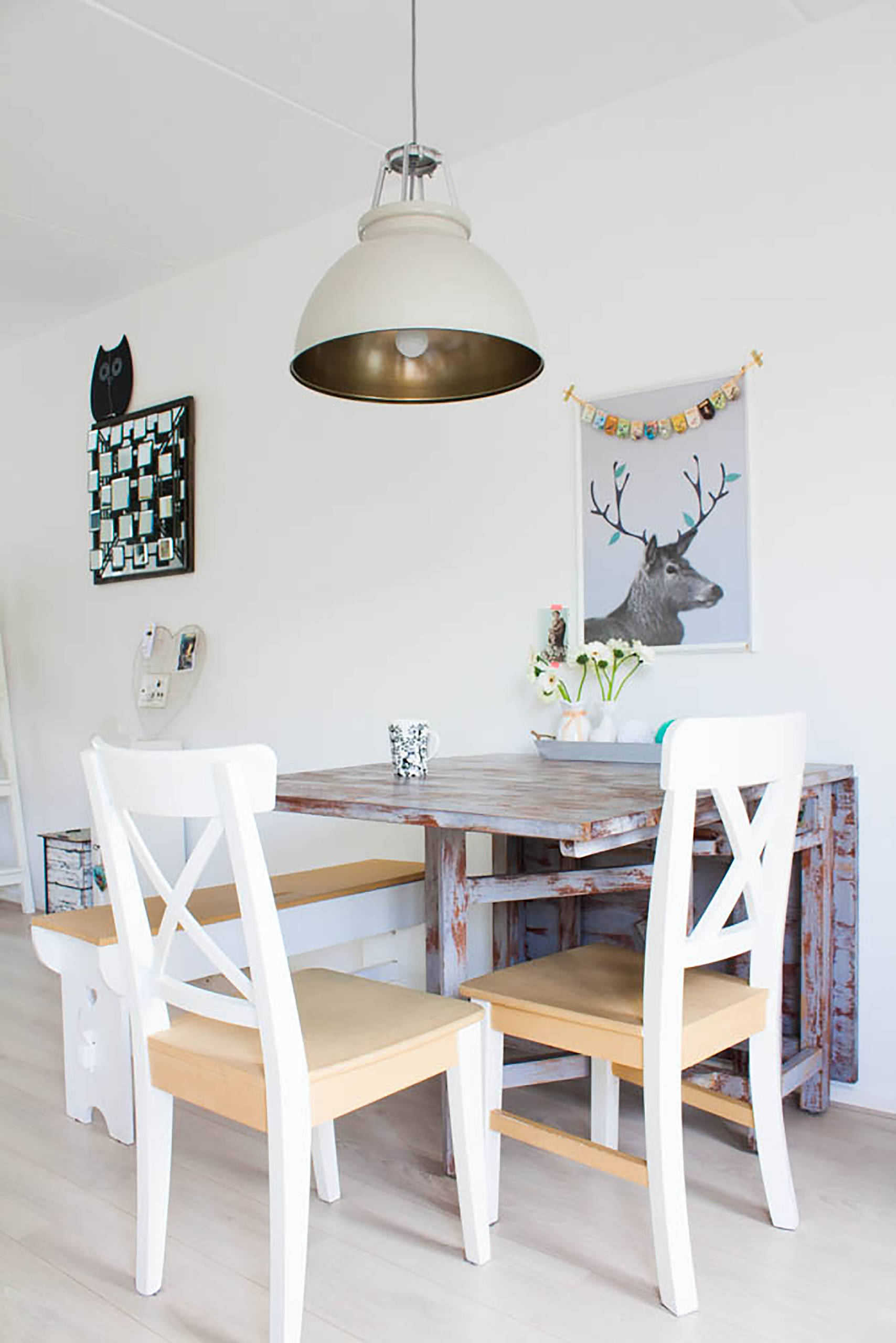
For those who prefer a bold, artistic statement, consider lighting fixtures with unique shapes, colors, or designs. An oversized pendant with a sculptural form, a chandelier with intricate detailing, or a fixture with an unexpected pop of color can serve as a focal point over the kitchen table, drawing the eye and elevating the overall design of the room. However, it’s important to ensure that the statement piece doesn’t clash with other elements in the kitchen and still serves its functional purpose.
When choosing kitchen lighting over the table, also think about the direction of the light. Some fixtures direct light downward, which is ideal for task lighting over the table, while others diffuse light in all directions, providing more general, ambient illumination. Fixtures with translucent or semi-translucent shades can help soften the light and reduce glare, making the space more comfortable for dining and conversation.
For those who are environmentally conscious, consider energy-efficient lighting options. LED bulbs are not only long-lasting but consume less energy compared to traditional incandescent or halogen bulbs. Some fixtures are also compatible with smart lighting systems, allowing you to control the lighting via smartphone apps or voice commands. This can help save energy and create a more personalized lighting experience in the kitchen.
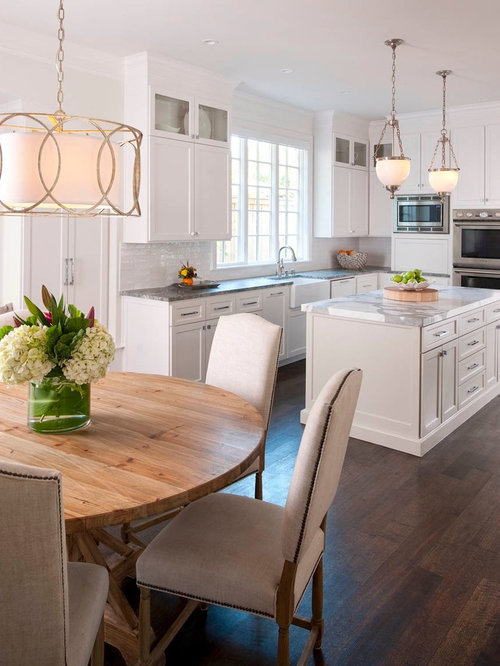
Another design aspect to think about is how lighting will impact shadows on the table. A single, direct light source can cast harsh shadows, making it uncomfortable for dining or working. Using multiple light sources or lights with diffusers can help create more even illumination, reducing the sharp contrast between light and shadow. Additionally, positioning lights in a way that minimizes shadows across the table’s surface will enhance both functionality and aesthetics.
When planning for kitchen table lighting, the ceiling height plays a significant role. For rooms with high ceilings, consider using longer pendant lights or larger fixtures that fill the vertical space effectively. Conversely, in kitchens with lower ceilings, opt for flush-mount or semi-flush mount lighting to avoid the fixture hanging too low and cluttering the visual space.
Finally, don’t forget about the electrical aspect. Installing dimmer switches can provide more control over lighting intensity and save energy. It’s also important to ensure that the wiring is compatible with the chosen fixtures, especially if you’re installing larger or more complex lighting systems. Hiring a professional electrician can ensure safe and proper installation.
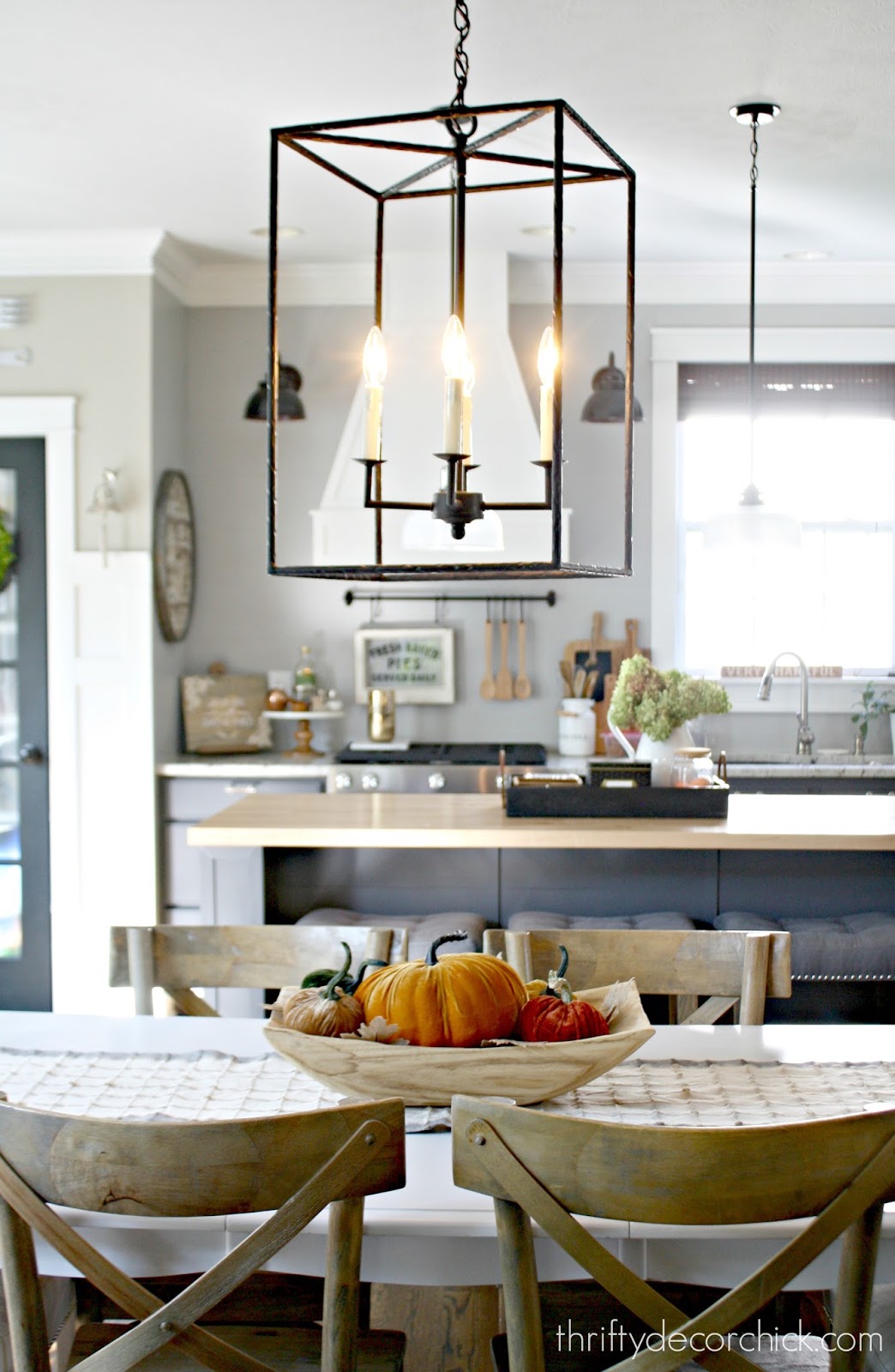
Common Mistakes to Avoid
One of the most common mistakes people make with kitchen lighting over the table is choosing a fixture that is too small or too large for the space. A fixture that doesn’t scale well with the size of the table or room can throw off the balance of the design. Another mistake is hanging the fixture at the wrong height, which can lead to poor illumination or obstructed views.
Neglecting to consider dimmable lighting or adjustable fixtures is another oversight, especially in multifunctional spaces. Lastly, many people forget to layer their lighting or fail to account for how other light sources in the kitchen will interact with the fixture over the table.
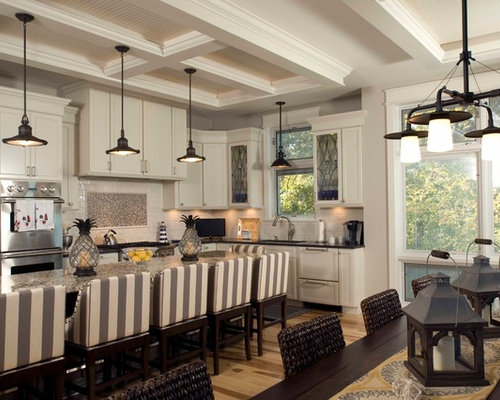
How high should kitchen table lighting be hung?
Generally, kitchen lighting over the table should be hung 30 to 36 inches above the tabletop. This height allows the light to illuminate the table adequately without obstructing the view or making the space feel cramped. However, the height may vary slightly depending on the ceiling height and the size of the fixture. Larger fixtures might require a bit more height clearance, while smaller ones can hang slightly lower.
What type of lighting is best for over a kitchen table?
Pendant lights, chandeliers, and linear suspensions are popular options for kitchen table lighting. The choice depends on your kitchen’s style, table size, and the ambiance you wish to create. Pendant lights are versatile and modern, chandeliers offer a more decorative touch, and linear suspensions work well with longer tables or contemporary designs. The type of lighting fixture should also match the overall aesthetic of your kitchen.
What size light fixture should go over a kitchen table?
A good rule of thumb is to choose a fixture that is one-third the width of the table. This ensures that the fixture is proportionate to the table and provides adequate lighting coverage. For example, if your table is 6 feet long, a fixture around 2 feet wide would be ideal. Additionally, for longer tables, consider using multiple pendant lights to ensure even illumination.

Can I use dimmable lighting over the kitchen table?
Yes, dimmable lighting is highly recommended for kitchen tables. It provides versatility, allowing you to adjust the brightness depending on the time of day, the task at hand, or the desired ambiance. Dimmable lights are particularly useful in spaces where the kitchen table is used for multiple purposes, such as dining, homework, or working from home.
What light bulb is best for kitchen table lighting?
LED bulbs are the best option for kitchen table lighting due to their energy efficiency, longevity, and customizable light temperatures. For a warm, inviting atmosphere, choose LED bulbs with a color temperature between 2700K and 3000K. For more focused, task-oriented lighting, consider a higher color temperature around 4000K. Dimmable LED bulbs offer the most flexibility for creating different moods and settings.
How do I prevent shadows on my kitchen table?
To prevent shadows, use multiple light sources or choose a fixture that diffuses light evenly across the table. Pendant lights in multiples or a chandelier with multiple bulbs can help spread light evenly and reduce harsh shadows. Additionally, consider layering your lighting with ambient and task lighting to ensure the entire space is well-lit without harsh contrasts.

Lighting above the kitchen table
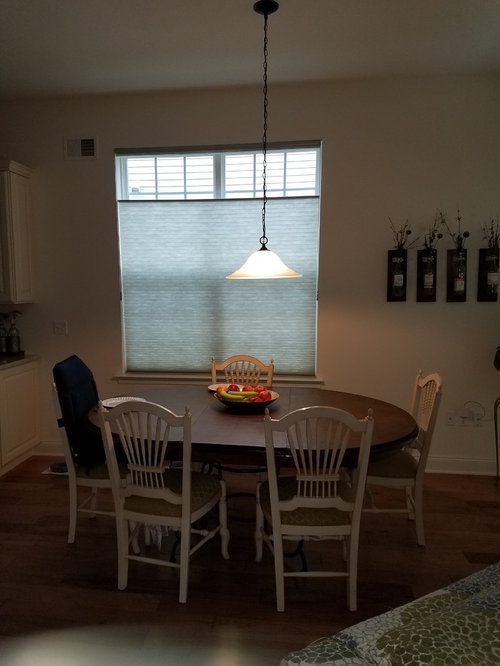
Kitchen Table Lighting

Related Posts:
- Country Style Kitchen Ceiling Lights
- Low Voltage Under Cabinet Kitchen Lighting
- Kitchen Drop Ceiling Lighting
- How To Install Can Lights In Kitchen
- How To Fit Led Strip Lights In Kitchen
- How To Lay Out Recessed Lighting In A Kitchen
- Lighting Over Small Kitchen Island
- Rustic Country Kitchen Lighting
- Kitchen Photography Lighting
- Lowes Led Kitchen Ceiling Lights